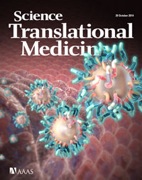2015 Nanobiotechnology Seminar Series
Calendars and Scheduling
Use the links below to view event calendars and the availability and schedules of rooms.
Reception 6:30 - 6:50 pm (otherwise noted below)
Seminars will be held in Clark Auditorium, Munzer Auditorium, Li Ka Shing Learning Center, or Lucile Packard Children's Hospital (LPCH) Freidenrich Auditorium
Jan 8, 2015 Jeffrey Chalmers, PhD |
Separation/Isolation of rare cells, including circulating tumor cells, in patient blood: It is not the same as spiking cancer cells into normal blood! Abstract: In this presentation, I wish to describe our journey from taking more fundamental studies of magnetic cell separation to our extensive involvement in the isolation and characterization of targeted cells, including cancer, and cancer associated cells, from the blood of cancer patients. We are not only interested in the strictly defined circulating tumor cells, CTC, but we are also venturing into characterizing the plethora of other unusual cells in the blood of these cancer patients. Given the highly interdisciplinary nature of this work, in this presentation I wish to attempt to present aspects of this work which will appeal to traditional engineering researchers through to clinical researchers interested in developing diagnostics not just for diagnosis and prognosis of cancer but also the effectiveness of experimental drugs/treatments. Specifically, I wish to highlight our work with squamous cell carcinoma of the head and neck and breast cancer, including a clinical trial sponsored by the National Cancer Institute. I also wish to also present some of our more recent work which, surprisingly, indicates that under highly specific conditions, we are able to sort rare cells using a high end flow cytometer. |
April 9, 2015 Steven A. Soper, PhD |
Integrated Fluidic System for Analysis of Circulating Tumor Cells: Searching for Drug-induced DNA Damage using Nanosensors Abstract: There has been progress made in early detection of breast cancers and better classification of breast malignancies. But, improved therapies that yield more cures and better overall survival are still needed; women with breast cancer still have a poor prognosis with a 5-year survival rate of 22% (Stage IV) and 72% (Stage III). Doxorubicin, cisplatin, paclitaxel, and tamoxifen are examples of drugs used for treating breast cancer with selection of therapy typically based on the classification and staging of the patient’s cancer. While treatment regimens assigned to some patients may be optimal using the current classification model, others within certain breast cancer sub-types fail therapy. New assays must be developed to determine how a patient’s physiology affects drug efficacy. In this presentation, an integrated fluidic system for the isolation and processing of circulating tumor cells (CTCs) will be discussed. The system quantifies response to therapy using three pieces of information secured from the CTCs; (1) CTC number; (2) CTC viability; and (3) the frequency of DNA damage (abasic (AP) sites) in genomic DNA (gDNA) harvested from the CTCs. The fluidic system consists of task-specific modules integrated to a fluidic motherboard. Micro-scale modules are used for CTC selection, CTC enumeration and viability determinations, lysing CTCs, and purifying gDNA. The module to read AP sites is a nanosensor made via embossing in plastics and contains a nanochannel with dimensions less than the persistence length of double-stranded DNA (~50 nm). Labeling AP sites with fluorescent dyes and stretching the gDNA in the nanochannel allows for direct readout of the AP sites, even from a few CTCs.
|
May 5, 2015 Ulrich Wiesner, PhD |
Cornell Dots as a New Class of Fluorescent Nanoparticles to Improve Visualization in Cancer Surgery and Treatments
References:
|
May 14, 2015
|
TBD |






